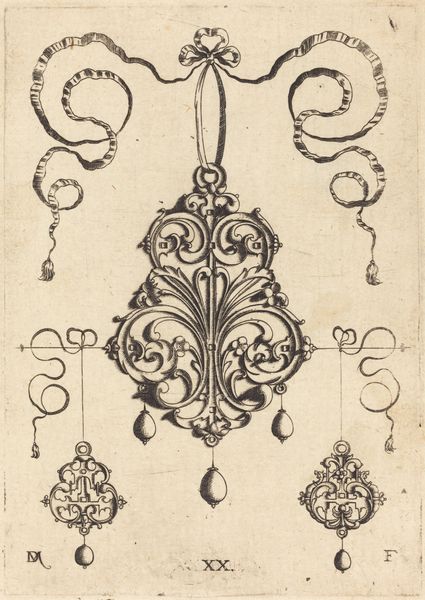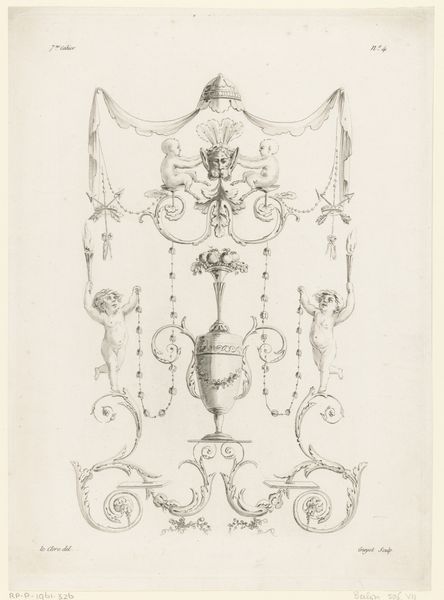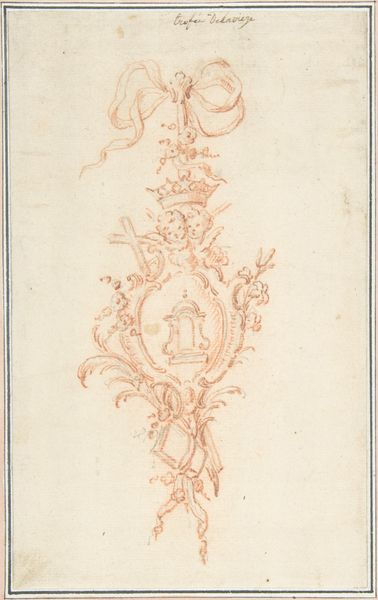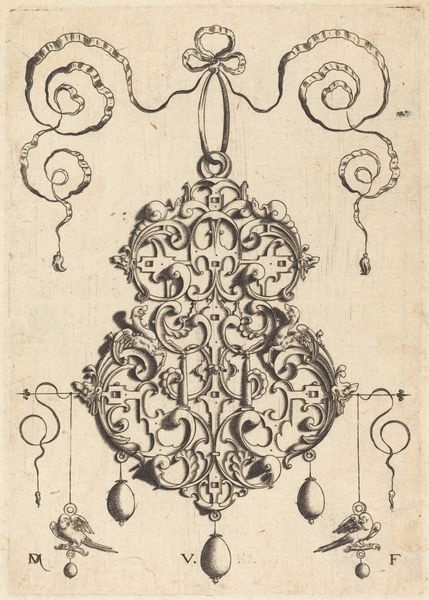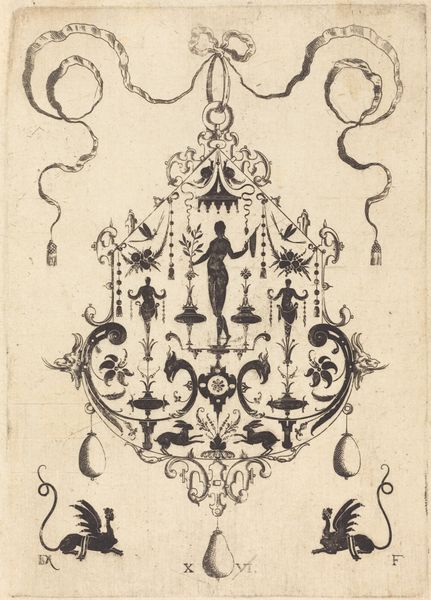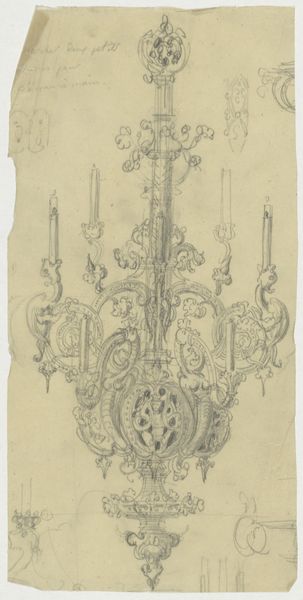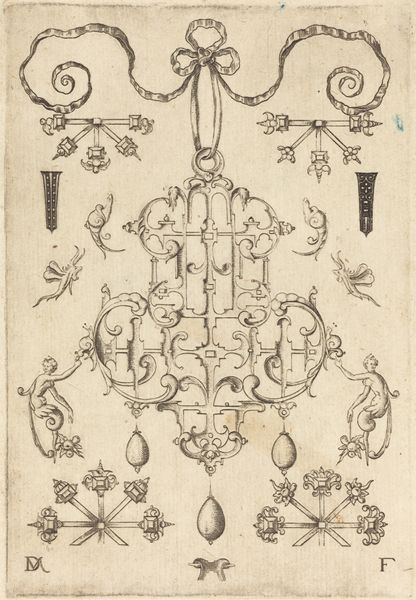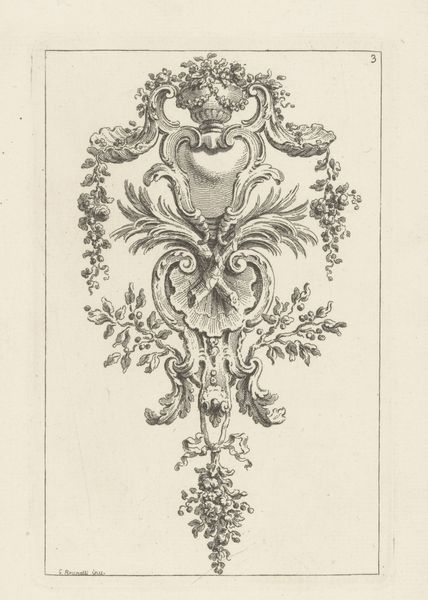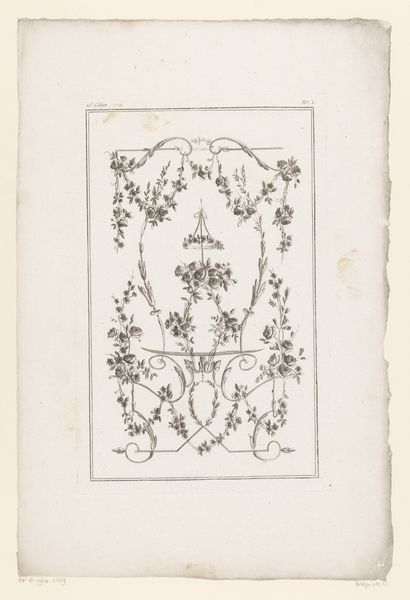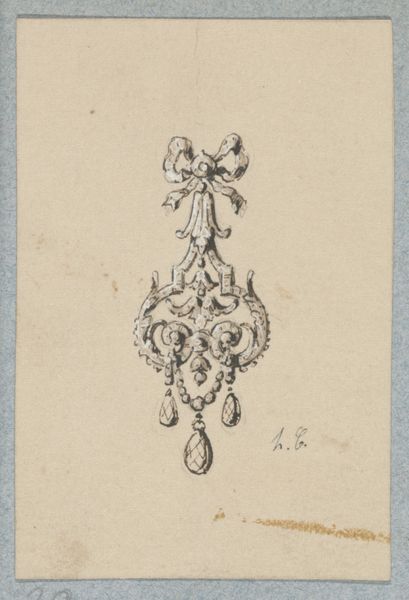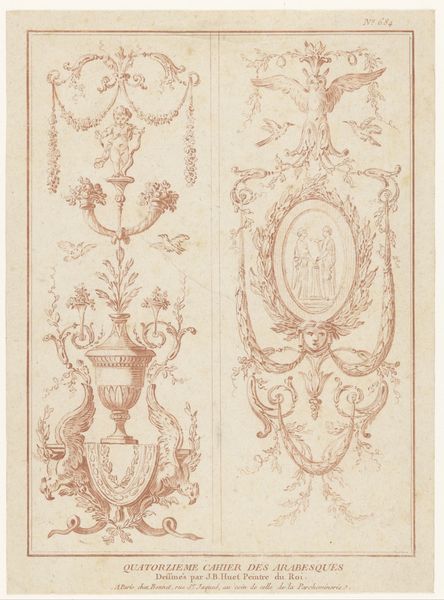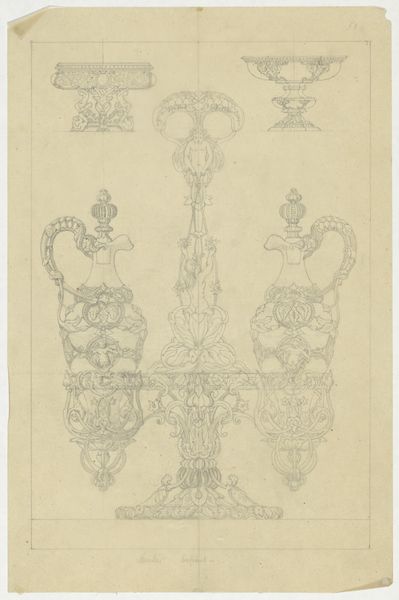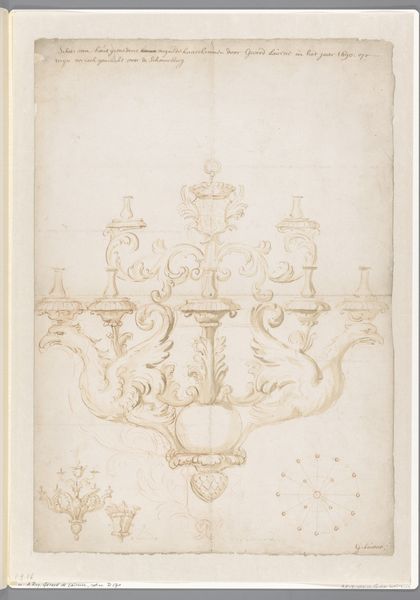
Dimensions: height 247 mm, width 183 mm
Copyright: Rijks Museum: Open Domain
Editor: Here we have "Twee panelen met arabesken," or "Two panels with arabesques," an ink and paper drawing made around 1770-1780 by an anonymous artist. The sepia tones create a classical feeling, almost like looking at architectural plans. What strikes you about this piece? Curator: I’m immediately drawn to the etching technique itself, the labor involved in meticulously crafting these designs for what were likely intended as patterns for consumption, for decorative arts. Notice how the "high art" of figuration, with the female figure, is intertwined with these repeating, almost mass-producible, arabesques. It speaks to a breakdown of traditional hierarchies. What sort of artisans might have utilized or circulated such designs? Editor: So, instead of appreciating the artwork purely for its aesthetic value, we should consider the hands that made it and its potential use? Maybe this was intended for wallpaper or textiles? Curator: Precisely. Consider the social context: the late 18th century saw a rise in consumer culture. Designs like these fueled that. Who benefited from that consumption and who provided the labor to make it possible? Look closely at the materials, ink and paper, common but essential commodities. How does the easy availability of the materials relate to accessibility for artistic practice, in terms of who could afford to engage with it and profit from the industry surrounding it? Editor: That's a perspective I hadn't considered. The artist’s anonymity underscores your point about focusing less on individual genius and more on the broader production. It sounds as though, in examining the method, tools, and social system surrounding its fabrication, we can value a common design in a profound way. Curator: Exactly. These aren't just pretty pictures. They're artifacts of a specific economic and social moment. The lack of attribution emphasizes that these items have value not only due to unique, recognizable style, but can act almost as products themselves. Editor: It’s interesting to think about how something decorative can be so deeply connected to economic structures. I’ll definitely view such designs with new eyes.
Comments
No comments
Be the first to comment and join the conversation on the ultimate creative platform.
